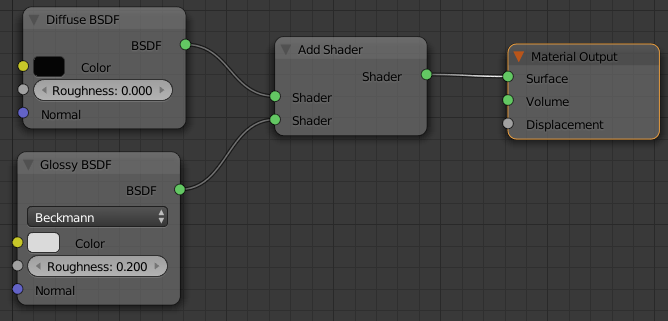I think your problem is that light is being reflected of the ground plane, but not into the camera. (see specular reflection)
Shouldn't reflective surfaces still brighten up a bit when a lamp hits them
It's not a matter of "brightening", the light has to hit the plane and then get bounced into the camera.
Diffuse objects scatter light, so they bounce some light into the camera regardless of the angle. Completely glossy objects (no Roughness) will bounce light without scattering it at all, and slightly rough glossy surfaces will scatter light slightly:

To visualize this in 2d:

As you can see, the camera will not receive any light from the (slightly rough) plane. Except for light reflected of the diffuse object:

Workarounds:
To work around this, you could:
Add more lights. You could add a light in front of the camera and behind the object which bounces light off the plane into the camera:

Increase the world background brightness (in the real world there is almost always some ambient light) You could make it so the world appears black to the camera while actually emitting a little bit of light by means of the Lightpath node:

Add a tiny bit of diffuse reflection to the glossy shader:

The diffuse shader input color brightness controls how much diffuse is added. (black is none)
Mix some diffuse reflection into the glossy shader. (with a mix shader) Note that this is slightly different than adding.
Replies to comments:
Thank you for this great response! Unfortunately, adding additional
lamps on the far side of the object has absolutely zero affect on what
the ground looks like. The ground has not seemingly changed one pixel
with the addition of another lamp or with the moving and re-adjusting
of the lamps and their strength. It HAS affected the candle though,
and the candlestick has a glossy finish, so I don't understand why the
planar floor won't do what the candle base is doing.
It depends on the angle of the surface and the camera. (and the type of lamp)
To get a feel for this you might want to try playing with the view (with viewport rendering on) with just the plane and a couple lamps to get an idea of how this works.
I should add that I wanted the candle to appear to be the only light in the room. I made the flame an emission source and that lights up just fine, but when the candle and candlestick are lit up but the floor is not it just looks weird
In that case you probably don't want to add extra lights. (you might even want to remove all the lights except for the candle flame)
Keep in mind that in an actual room there is some indirect lighting from the walls and other objects. You could set the world to a very dark color (but not black) to simulate this.
In the end you were right. I had my floor as a glossy surface, with a roughness of .100 which apparently makes the surface too glossy to reflect light? I had to make it a .2 or higher to get any sort of light reflection off the object. Although I feel like even a polished brass sphere should glow when a light hits it.
Again, an object is only visible when light bounces off it and into the camera. AFAIK, there is no such thing as "too glossy to reflect light", it's just not reflecting light where you want it. (i.e. the camera)
The reason increasing the roughness makes reflections more visible is that it scatters light in more directions, increasing the probability that some light will enter the camera.
I think the solution you want here is to mix some diffuse reflection into your glossy material. This will bounce light in pretty much every direction, making sure everything is visible to the camera.
If I had any questions left, I'd ask if there's a way to adjust the
intensity of an emission source that isn't actually a lamp? As it
stands I have the flame set as an emission 'texture' but i put a lamp
inside the object and adjusted the lamps brightness to compensate for
the flame's lack of brightness.
I'm not sure what you mean by emission texture, but if you are asking what I think you are asking:
You can make an emission shader that appears the color set in the Color input while emitting more light than a Strength of 1:

Only an emission shader with a strength of 1 and 20:


With the above node setup:

Example renders:
Completely black world with some diffuse mixed with the glossy materials:

Completely black world with only glossy reflection:

Only glossy with a mesh light (selected) affecting the glossy floor:















